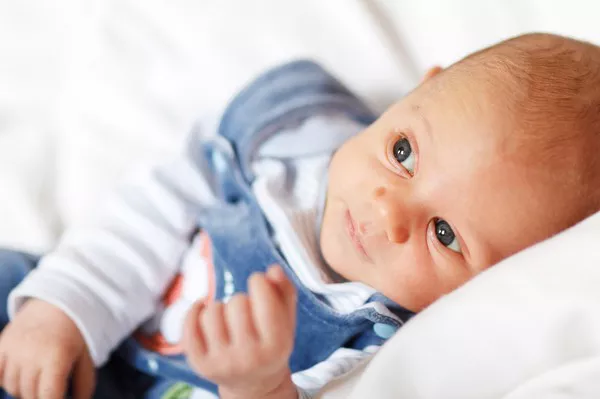Welcoming a newborn into your life is an incredible experience, but it also comes with new responsibilities. Ensuring your baby’s comfort and health is of the utmost importance, and a significant part of this involves proper diaper changing. Diaper changing is not just about cleanliness; it also plays a crucial role in maintaining your baby’s overall well-being. In this article, we will explore the importance of diaper changing, the recommended frequency, and the step-by-step process to do it correctly, considering the specific needs of your precious little one.
Why Diaper Changing is Crucial
Keeping your baby’s diaper clean and dry is essential for several reasons. Firstly, maintaining proper hygiene prevents diaper rash and skin irritation, which can cause discomfort and distress to your baby. Secondly, the warm and moist environment created by soiled diapers can promote bacterial growth, leading to potential infections. Lastly, dirty diapers may cause your baby to feel uneasy, affecting their mood and sleep patterns. By understanding the importance of diaper changing, you are setting the foundation for your baby’s health and happiness.
Understanding Newborn Diaper Needs
Newborns have specific diaper needs due to their unique physiology. They have tiny bladders and bowels, which means they urinate frequently. On average, a newborn baby may wet their diaper up to 12 times a day, while bowel movements can occur anywhere from 1 to 8 times daily. Additionally, breastfed babies often have more frequent bowel movements than formula-fed babies. By understanding your baby’s diaper habits, you can be better prepared and adjust your diaper-changing routine accordingly.
How Often to Check and Change Diapers
To maintain optimal diaper hygiene, it is advisable to check your baby’s diaper every two to three hours during the day. Frequent checks ensure that your baby’s sensitive skin stays dry, reducing the risk of diaper rash. Additionally, it’s essential to check the diaper after each nap, feeding, or playtime, as babies are more likely to have wet or soiled diapers during these activities. Furthermore, before putting your baby down for the night, always ensure they have a fresh diaper to maximize their comfort and promote uninterrupted sleep.
Signs that Diaper Change is Needed
Apart from following a regular diaper-changing schedule, being attentive to your baby’s cues is crucial. Crying or showing signs of discomfort can indicate a wet or soiled diaper. Some babies may become restless or fidgety when their diaper is soiled, while others may show facial expressions of displeasure. Frequent touching or pulling at the diaper area could also be a clear signal that your baby needs a diaper change. Being attuned to your baby’s body language will not only keep them clean and dry but also strengthen your bond as you respond to their needs promptly.
The Diaper Changing Process
Changing diapers may initially seem like a daunting task, but with practice, it becomes a routine part of parenthood. Follow these steps to ensure a seamless and hygienic diaper-changing experience for your baby:
Gather Supplies
Before starting, assemble all the necessary supplies: a clean diaper, baby wipes, diaper rash cream, and a changing pad or soft surface. Having everything within reach ensures you don’t have to leave your baby unattended during the process.
Wash Hands
Always begin by washing your hands thoroughly with soap and water to eliminate any potential germs. Clean hands are essential to prevent the transfer of bacteria to your baby’s delicate skin.
Place Baby Safely
Gently lay your baby on their back on the changing pad or a clean, safe surface. Consider using a changing table with raised sides to prevent your baby from rolling off. If using a changing pad on a bed, ensure it is stable and secure.
Remove Dirty Diaper
Carefully unfasten the tabs of the dirty diaper and fold them back. Before completely removing the soiled diaper, use the front part of the diaper to wipe away any excess waste from your baby’s skin.
Clean the Area
Use baby wipes or a clean, damp cloth to gently cleanse your baby’s diaper area. For girls, wipe from front to back to avoid introducing bacteria from the rectal area to the urinary tract.
Apply Diaper Cream (if needed)
Inspect your baby’s skin for any signs of redness or irritation. If present, apply a thin layer of diaper rash cream to form a protective barrier on your baby’s skin, shielding it from moisture and friction.
Put on a Fresh Diaper
Slide a clean diaper under your baby’s bottom, ensuring the back of the diaper aligns with their back and the front with their tummy. Fasten the tabs snugly but not too tight, allowing enough room for your baby’s skin to breathe comfortably.
Dispose of the Dirty Diaper
Roll up the soiled diaper, securing it with the tabs, and dispose of it properly in a diaper disposal bin or a sealed trash bag. Never flush diapers down the toilet, as they can cause blockages.
Dress Your Baby
Gently dress your baby in clean, dry clothes, ensuring they are cozy and snug.
Conclusion
Regularly checking and changing your newborn’s diaper is an essential aspect of providing proper care and ensuring their well-being. By maintaining clean and dry diapers, you protect your baby from diaper rash, skin irritation, and potential infections, ensuring they remain content and healthy. Pay attention to your baby’s cues and follow the recommended diaper-changing frequency to provide the best possible care for your little one. As you become more familiar with your baby’s needs and develop a diaper-changing routine, the process will become more efficient and enjoyable for both you and your baby.


